As the holidays quickly approach, we likely find ourselves thinking about traditions, a blend of the old and the new. Sharing favorite seasonal practices with those who look forward to them every year, and oftentimes in the process, establishing new rituals, too.
Marketers take a similar approach in their efforts to secure their share of consumers’ holiday shopping dollars by refreshing themes that have worked in the past: taking an age-old concept and putting a modern spin on it. Let’s take a look at the holiday past and see how it can make your brand stand out in the present.
Frost Fair 1683: Commerce Meets Christmas
Up until the late 1600s Christmas was a more somber affair rather than the jovial celebration we know it as today, but when a series of freak ice storms hit London in 1683 freezing the River Thames, it was the perfect excuse for a celebration. The Frost Fair was a two-month fair hosted on the frozen River Thames and was a mix of seasonal shops and products, activities such as horse and coach racing, ice skating and puppet plays, football, bowling and sledding and plenty of holiday cheer – aka booze. Because the frozen river made shipping impossible, local Londoners took to the fair for trade, travel and entertainment. Due to the pure spectacle of the fair itself, people from all over the country flocked to see it as well.
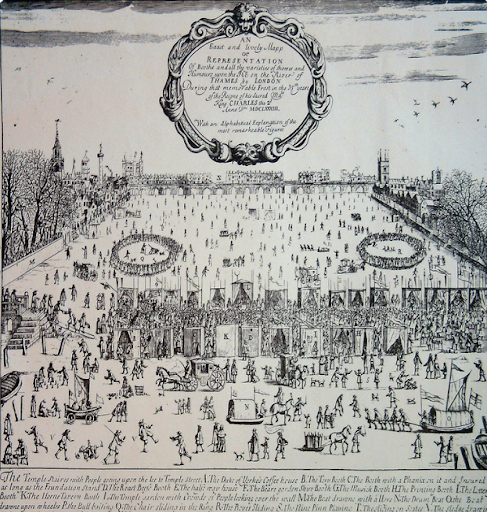
Modern Take: Experiential marketing like pop-up shops and bars and large-scale holiday events are a great way to evoke a sense of tradition and nostalgia as well as draw crowds from near and far.
Some modern-day examples of this right here in Indiana include:
- Christkindlmarkt in Carmel
Since its opening in 2017, the event has attracted over 1 million people to the city of Carmel. The market was twice named the #1 winner for Best Holiday Market by USA Today’s 10BEST travel media group, named the top Christmas market in the state of Indiana by Taste of Home Magazine in 2017, and a top holiday market by Fox News in 2021.
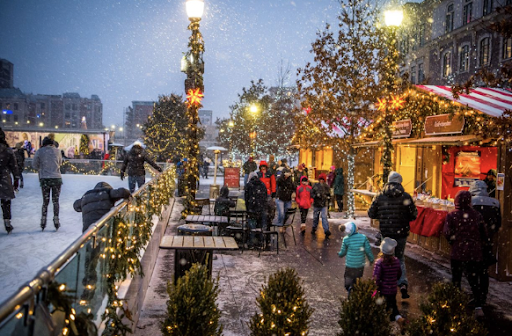
- Circle of Lights in Downtown Indianapolis
This beloved Indy event remains a tradition among many families to this day, since its inception 60 years ago.
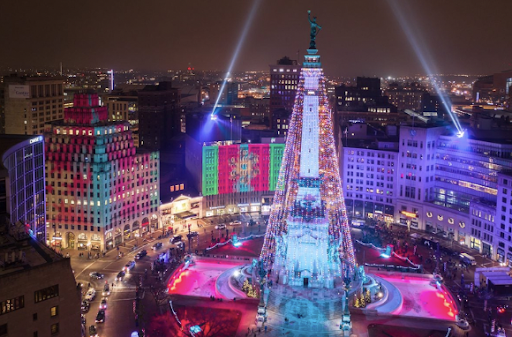
Charles Dickens 1843: The Man Who “Invented” Christmas
So obviously Charles Dickens didn’t invent Christmas, but Christmas was at the time — as mentioned above — more of a second-rate holiday in Great Britain. Meanwhile in America, Christmas was being outlawed in many states throughout the 18th century by Puritans because they saw it as a wasteful festival that threatened Christian beliefs and encouraged immoral activities (they’re looking at you Frost Fair). Then, in December 1843, the release of Charles Dickens A Christmas Carol reshaped the holiday in a more positive light, making it about friends, family, and the Christmas spirit. A Christmas Carol wasn’t so much a holiday campaign as it was a huge success in and of itself.
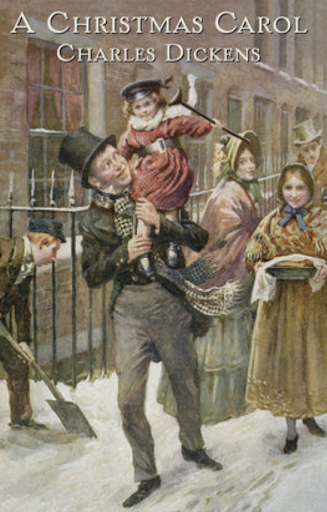
Modern Take: More than discounts and sales, heartwarming stories and holiday cheer are what really sells.
Many modern brands are doing this by creating commercials and campaigns that tell a story so captivating, you forget it’s an ad.
- H&M Come Together Campaign 2016
This is a four minute short film directed by Wes Anderson that was released online to promote H&M’s ‘Come Together’ clothing line. The video reached over 860 million people online, and received over 19 million YouTube views. #ComeTogether trended worldwide upon its release, and fueled conversation around the topic instead of around the clothing. Even though this wasn’t a typical sales pitch, it contributed to a positive sales environment for H&M as well as a 6% YoY growth across the H&M group.
- Google Home Alone, Again Ad
Another way current brands are making memorable holiday ads is by using the power of Nostalgia. With their Home Alone, Again Ad, Google immediately transported anyone that’s ever seen Home Alone straight to 1990, craving a slice of cheese pizza from Little Nero’s.
Macy’s 1874: Masters of Holiday Innovation
In the latter half of the 1800s — when plated glass first become widely available — owners and managers that built large windows running the length of their stores were at the cutting edge of innovation. Macy’s in New York City was the first to use window displays for the holidays and remained one of the only major retailers to do so for more than 25 years. It became an attraction for local New Yorkers as well as tourists and it eventually led to fierce holiday window display competition in other major cities.
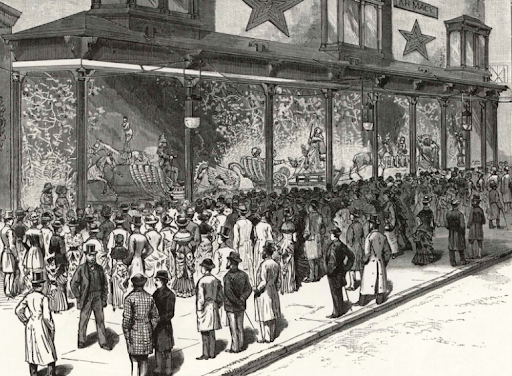
Modern Take: It’s important for brands to use emerging technology and innovation to create memorable holiday experiences
- Google Santa Tracker
Going strong since 2004, Google started The Santa Tracker campaign as a simple way to follow Santa’s journey around the world via Google Earth. It’s since evolved to include interactive games and experiences as well as show information about the cities Santa visits and offer “live updates” directly from the sleigh.
![]()
- Office Depot’s Elf Yourself
Since 2006, users have created over one billion elves using the site and app. Recently, the Elf Yourself app has been updated with new features, such as Augmented Reality and the ability to print your elf as a seasonal greeting card. Users can also share their creations on social media using #ElfYourself. The Elf Yourself campaign is a really great example of how a holiday campaign can be used to grow brand awareness rather than only aiming to increase sales.
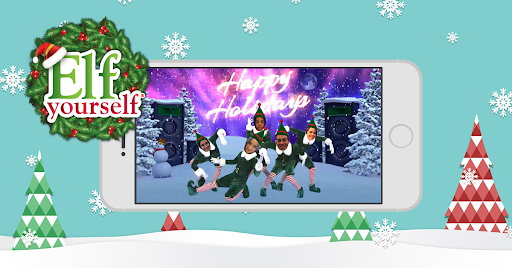
Coca Cola 1931: Scary Claus to Santa Claus
Before 1931, there were many different depictions of Santa Claus around the world, some not so jolly but downright scary. In 1931, Coca-Cola commissioned illustrator Haddon Sundblom to paint Santa for a series of Christmas advertisements, and the result became the typical image of Santa that we all know and love today. This shift in the depiction of Santa was so successful that – even though it’s not true – Coca Cola is often credited for ‘inventing Santa Claus’.
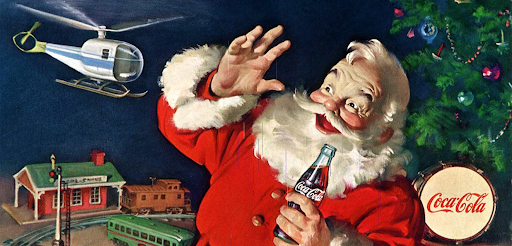
My Modern Take: It’s risky to go against tradition, but the reward can be worth it… sometimes.
The mysterious modern take above is of course in reference to the Starbucks red cup controversy of 2015. For those of you who may be unfamiliar with the tale, it’s story time.
- Starbucks Cupgate 2015
Once upon a time, in 1997, Starbucks started redesigning their cups for the holidays and customers anxiously awaited and celebrated the new design each year…until 2015. That year would go down in history as the time Starbucks broke the internet and the world with their solid red cup design.
2015’s cup was a simple red ombre design, which Starbucks said was intended to represent the spirit of inclusivity. That didn’t sit well with an internet evangelist who created a video claiming Starbucks was basically trying to ruin Christmas – it quickly went viral and led to a raging controversy.
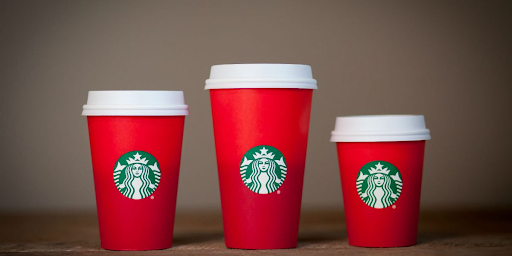
In response, the genius that is Starbucks spun this and invited its customers to use the red cups as a blank canvas to fill with their own stories. They even had a contest where they chose their favorites and shared the artists creations on their social media channels.
Throughout this trying time, social media was flooded with images of these cups and for every negative hashtag created there was a trending pro-Starbucks hashtag (#itsjustacup). It was mentioned in the news, talk shows, and even by then presidential candidate Donald Trump. No matter what your opinion was, it always included the brand name of Starbucks – bringing crazy attention that resulted in an uptick in sales
So the clear winner in this fight and hero of this story was Starbucks – the end!
If your brand wants to build holiday traditions that generate awareness, drive sales and just create those warm fuzzy feelings that consumers are craving this time of year, looking to the past is a great place to start.
Happy holidays, and happy marketing!
